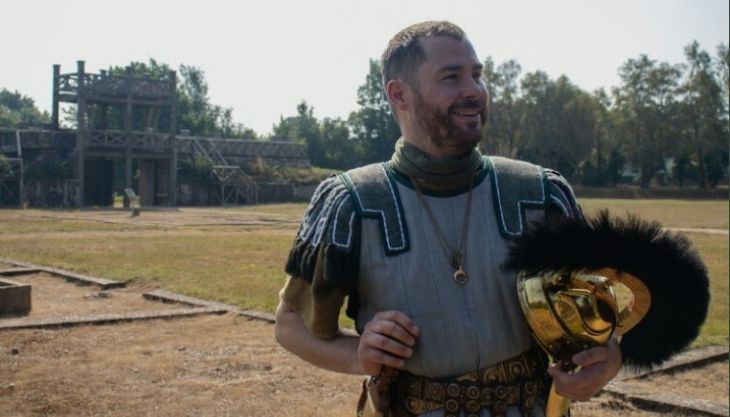The Lunt Roman Fort is open to the public during select school holiday dates.
It’s A.D. 60; the Iceni of East Anglia led by the legendary Boudica have rebelled against Roman rule and have just been defeated in a terrible battle fought somewhere in the Midlands. As a result, the Romans are building a series of fortifications across the Midlands including the Lunt…
This partially-reconstructed timber fort awaits you. Explore the exhibition in the granary and imagine yourself training horses in the gyrus – a feature not found anywhere else inside a Roman Fort.
Early forts in Roman Britain were constructed at great speed to secure recently occupied areas. They were first built from turf and timber and were later rebuilt in stone when they needed to be renewed. The Lunt is unusual in that it was never rebuilt in stone because it was only in use for a short period of time..
The earliest evidence for occupation at the Lunt site has been dated to around the time of the Boudican rebellion in AD60 – AD61. The Lunt is close to the junction of two major Roman roads, the Fosse Way and Watling Street. This whole area appears to have been a highly militarised zone with forts at Wall (Letocetum), Mancetter (Manduessedum), Alcester (Alauna) and Metchley. Tacitus recorded that the whole army was kept mobilised during the winter to quell any remnants of the Boudican uprising.
The fort sits on a high plateau with a steep wooded slope overlooking the river Sowe. The site’s defensive situation and its proximity to a crossing point in the river made it an ideal location for a Roman fort. The river would have provided a source of fresh water and the Forest of Arden supplied timber for building.
In AD64 the fort was reduced in size and the gyrus constructed. Towards the end of the AD70s the number of barrack blocks at the fort was reduced. This may have been due to an uprising by the Silurians, a tribe in south Wales, and the need for soldiers to be stationed within easy reach of any trouble.
Archaeological investigations have uncovered small amounts of Roman armour and horse equipment suggesting that cavalry units were stationed at the Lunt. Based on the number of barrack blocks, it has been estimated that there were approximately 480 foot soldiers and 120 cavalry soldiers here.
In AD79 Agricola became governor of Britain and there was a move northwards to conquer the whole of the island. The fort was finally abandoned around AD80.
A single coin of Gallienaus (AD260 – AD268) found in the post hole of a gateway may indicate that the site was reoccupied by the army at this time. There is no other evidence of occupation so the coin could have been a casual loss long after the fort had been abandoned
All Roman forts employed a variety of defensive structures and methods. The Lunt had a V-shaped ditch surrounding the whole fort. Roman ditches did not contain water, like later castle moats. Often the bottoms of these ditches were flat so they could be scraped clean. The Lunt ditch also had a slot at the bottom that may have acted as an ankle breaker.
Behind the ditch was the fort rampart. This was made of two sloping turf walls filled with soil from the ditch. It was topped with a chest-high wooden fence. If attackers did reach the top of the rampart, the fence had narrow gaps in it, just wide enough to fit a Roman sword through
At the Lunt, the defences deviate from the traditional straight line to produce a marked bow shape around the gyrus on the east side and following the topography of the plateau on the west side.

